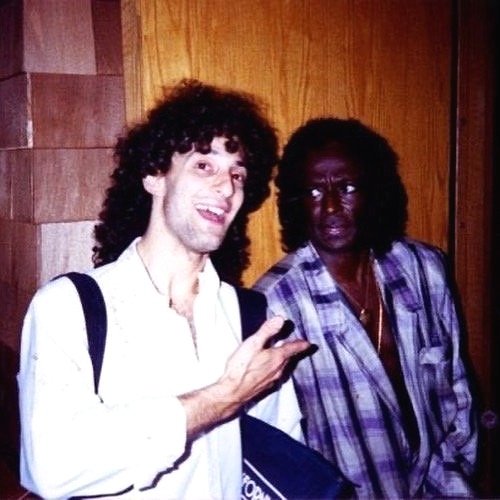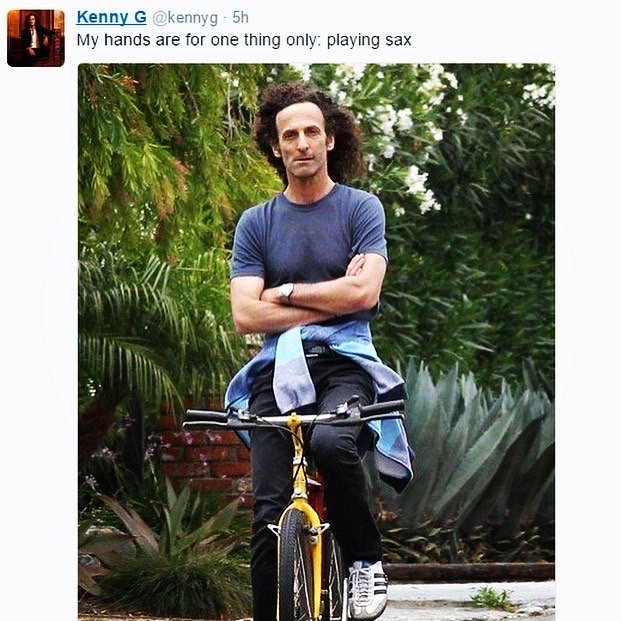Hey, do you want to watch a film about Kenny G? Umm… Ha, that was my first reaction. But Penny Lane's 2021 documentary for HBO is a real eye-opener, revealing much about our perceptions of jazz, the purpose of critique and the boundaries of good taste.
The permed piper of schmaltzy, sax-y pop is a polarising figure. G (government name Gorelick) has amassed more than 75 million album sales with behemoths including Breathless and Duotones.
I remember one man I met while backpacking in India who really went hard for this guy, right over my head. And that was after his prolific 90's period. Either listeners over there are a couple of years behind … or class is timeless.
Anyway, G may be the best-selling instrumentalist of all time but he has been ridiculed for decades and vilified for tarnishing a great art form. Let me put it this way: his music has never spoken to me. And I object to him saying the music of Coltrane and Charlie Parker isn't "heartfelt". However, the fact that he has connected so deeply with so many people for so long can't be without merit. Can it?
We also need to separate the man from the music. Early on in Listening to Kenny G, he says most people know him more as a sound than a personality, which is true. And guess what, he's a likeable guy! Humble, self-deprecating, a little square, corny in an endearing way. And eager to please – he wants to give Lane the best interview she's ever had [cue excited puppy face].
But you won't catch him kvetching that much and he seems incapable of hate. As for hard work, practice is his mantra. He racks up two to three hours a day. This guy lives to learn. He's not only one of the most skilled golfers in music. G man also has a pilot's licence and ain't afraid to use it.
G came up in Seattle and excelled in the Franklin High School Jazz Lab under James Gardiner who turned him on to Grover Washington Jr. He made his name in the group Cold, Bold & Together and would play with whoever passed through town, from Sammy Davis Jr to Liberace. Arista records impresario Clive Davis caught him playing with Jeff Lorber Fusion and offered G a deal.
Davis tried to place him in and around the evolving disco-pop / R&B of the day and in very cheesy videos, but it didn’t work. Can’t think why… Not even Kashif, fresh off producing ‘Love Come Down’ for Evelyn “Champagne” King, could find the magic formula.
Then one appearance playing the syrupy ‘Songbird’ on The Tonight Show with Johnny Carson and suddenly he was the sound of contemporary jazz. To the despair of intrepid players grinding night after night and to the ire of purist Pat Metheny.
As Smooth Jazz Network's Allen Kepler recalls, instrumental hits were few and far between on the pop charts up to that point. Ramsey Lewis' 'The In Crowd' and Average White Band's 'Picking Up The Pieces' were outliers.
Now here’s G following up on one smash hit with another. Soon he’s everywhere, from living rooms to dentists’ rooms. Did you know his song 'Going Home' has become the unofficial closing anthem for food courts, outdoor markets, shopping malls and train stations in China?
It's the functionality of his music, its anodyne nature, that appeals to some and offends others. The New York Times' jazz and pop critic Ben Ratliff poses a hilarious question: "Is Kenny G's music a weapon of consent? Does it make people agree to comply and if so … why?"
It has the whiff of a gaudy fragrance, a weapon of mass seduction. His instrument cavorting in the mix on a bed of roses, like a diva to a ballad. There’s no call and response, no dialogue, as Pop Matters critic Will Layman notes. The dynamic that makes so much jazz out there interesting and thrilling. "This is not sex," he says. "This is masturbation."
Ratliff sees a paradox – it's from a tradition and yet has no conceivable past.
Writer Jason King calls him a deeply problematic figure: G's been a gateway to jazz for many listeners but he's also extending a long and troubling history of appropriation in popular music where black artists innovate then white artists come along and stylise, receiving greater financial remuneration and critical acclaim. To his credit, G admits his skin colour probably helped his career, only to step back over the line by making a queasy duet with Louis Armstrong.
The final chapter of Lane’s jaunty documentary sees him trying to adapt to a new age by meme'ing (well) on Twitter, appearing in videos with The Weeknd and Katy Perry, even parlaying his Valentine's Day serenade of Kim Kardashian into a respectable feature on Kanye's ‘Use This Gospel’ from the album Jesus Is King.
On 2021’s New Standards, he attempted to play a bit more instead of telegraphing a goopy melody. But it’s a far cry from the incendiary excursions of Shabaka Hutchings or Kamasi Washington. Next, G's eyeing up an Oscar for best score. You can't fault his ambition.
Footage of one concert shows him trying to spread a little "sax education" by covering ‘Desafinado’, which became a major hit for Stan Getz. Then 'Naima' by … John Coltrane. The audience looks back at him with a mixture of confusion and indifference.
Perhaps there's the rub. Does listening to Kenny G say more about the listener than the artist? I'll let you be the judge. Give him a fair hearing though.













